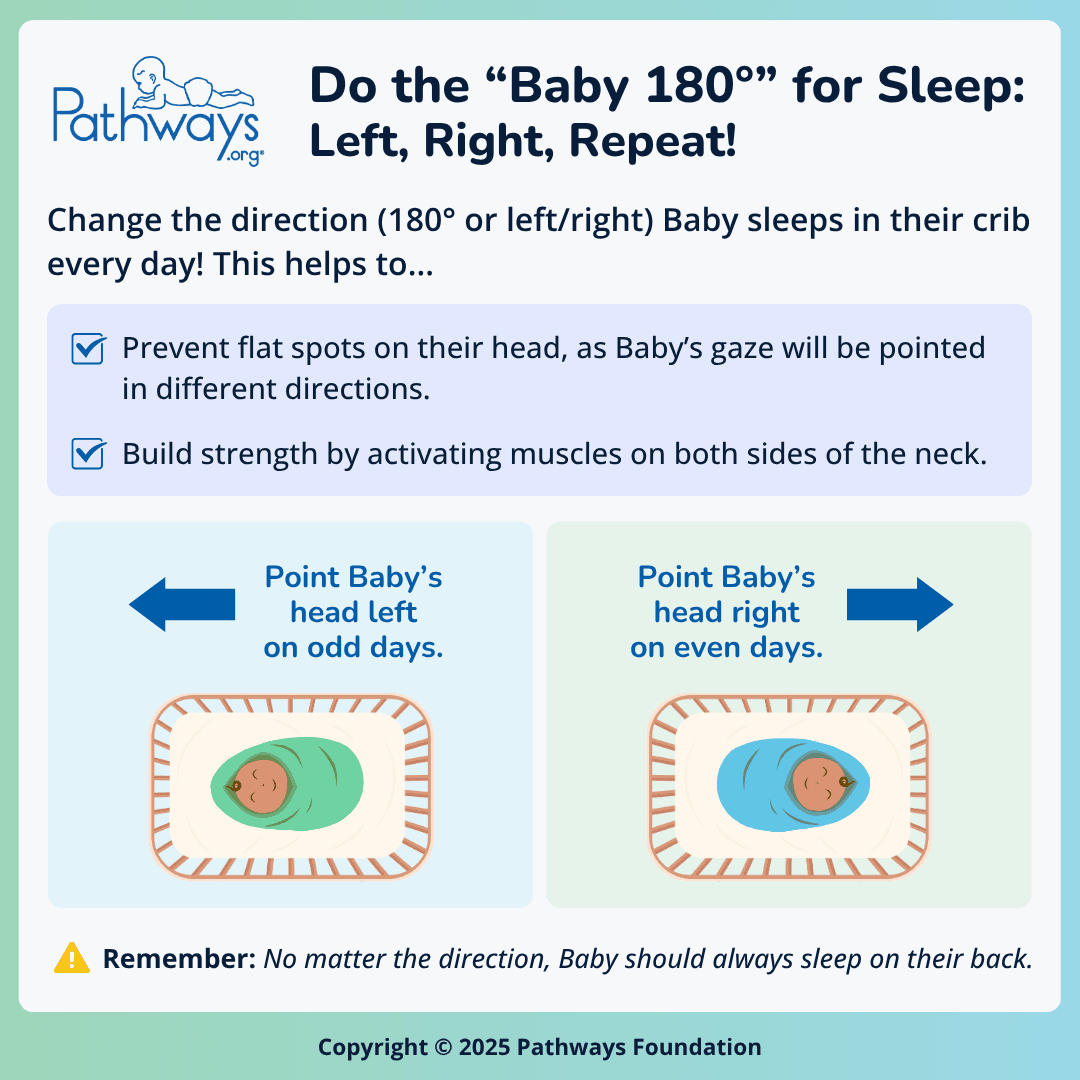The ABC’s of Safe Sleep
Before you say goodnight to your little one, here are some best practices to ensure safe sleep for babies, as recommended by the American Academy of Pediatrics.
Check out this quick tip to help prevent positional plagiocephaly:
Safe sleep for babies is as easy as A, B, C: Alone, Back, and Crib.
Baby should always sleep alone.
Don’t sleep in the same bed as baby.
The safest place for baby to sleep is the same room as their caregiver.
You can place crib next to the bed.
Keep the room smoke and pollutant-free.
Keep the room cool to prevent overheating.
Baby should sleep on their back.
Place baby on their back to sleep and tummy to play.
Help to prevent flat spots on the head by changing sleep direction daily.

Baby should always sleep in a crib.
Use a crib or bassinet that meets current safety standards.
Provide your baby with a firm sleep surface.
Keep crib empty.
Remove loose bedding, bumpers, and toys as they can put safety as risk.
Avoid using sleep positioning devices.
There is no evidence these are effective and in some cases, they pose a danger to baby if they roll out of the device.
Don’t forget to check out our tips for helping baby sleep through the night!
Because baby sleeps on their back, Tummy Time is essential!
Tummy Time should begin as soon as baby comes home. Learn more.
These guidelines have been created by the American Academy of Pediatrics.1
Sources
1 Moon Rachel Y. SIDS and Other Sleep-Related Infant Deaths: Expansion of Recommendations for a Safe Infant Sleeping Environment. Task Force on Sudden Infant Death Syndrome. 2011; 128; 1341-1358.





